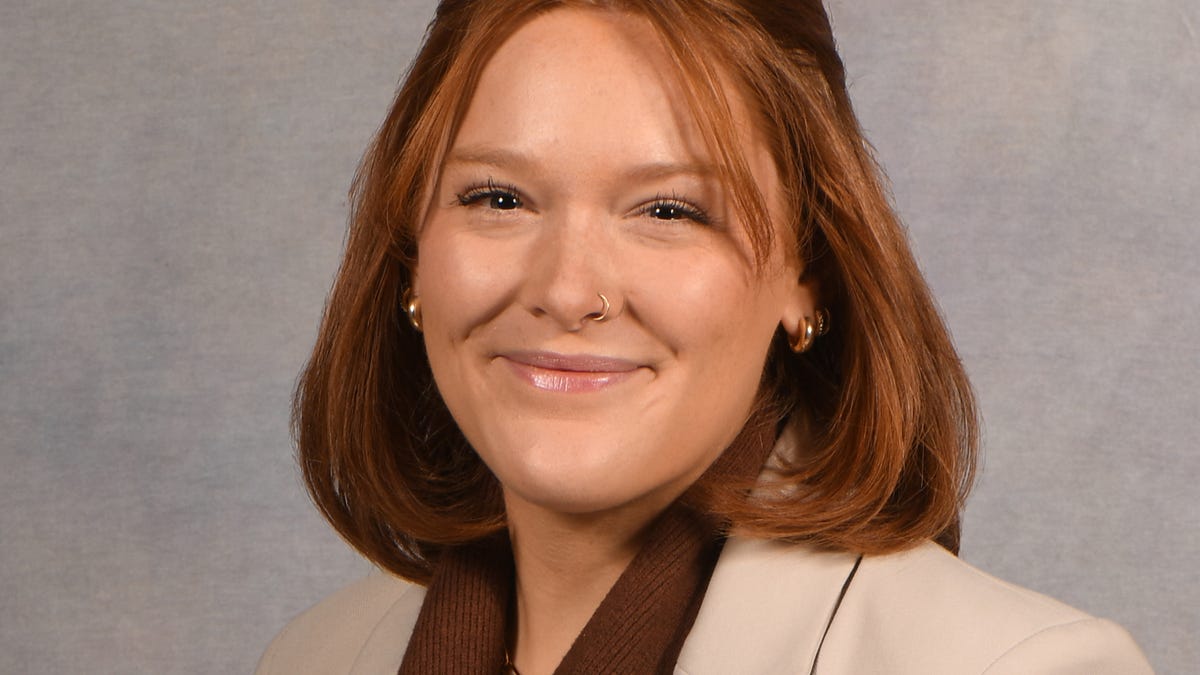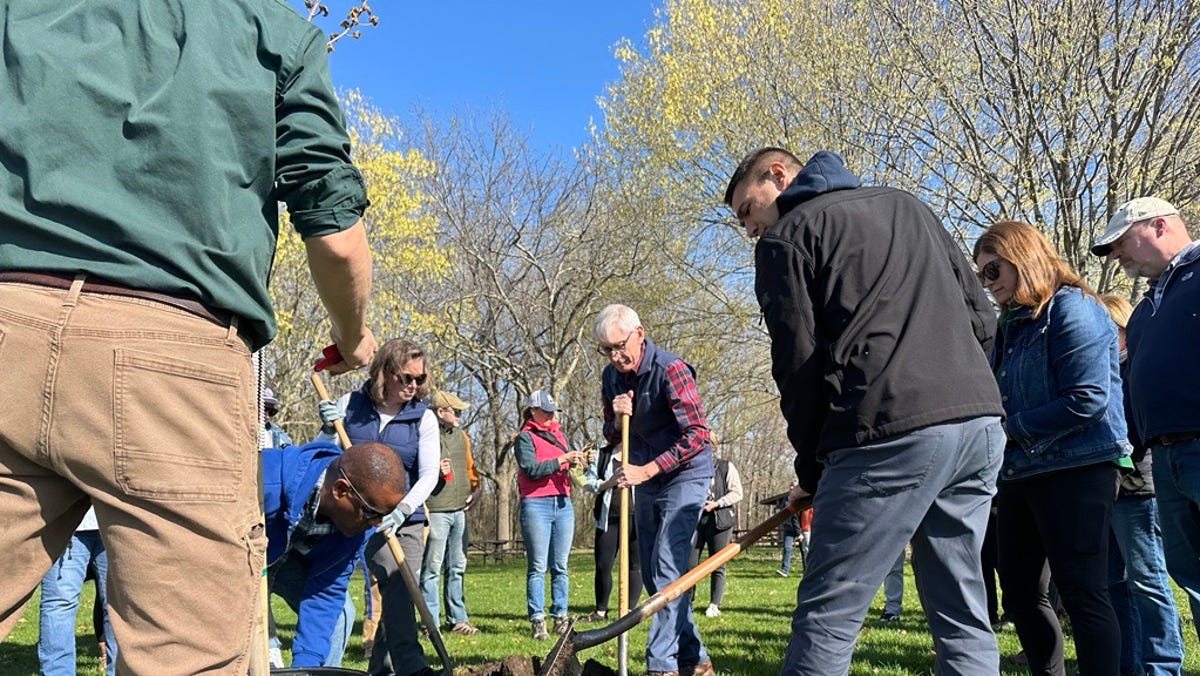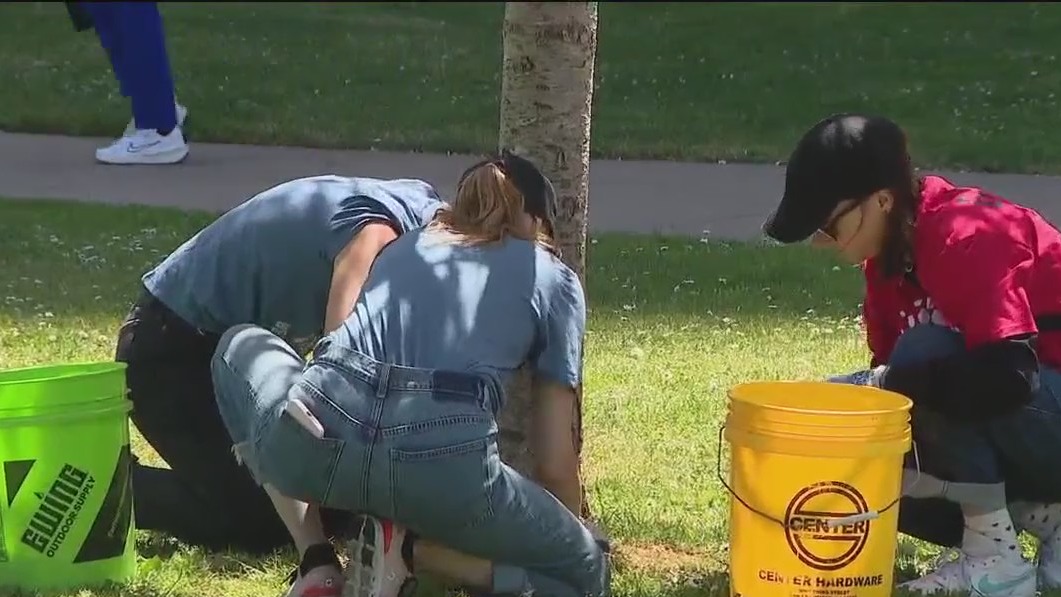South Dakota
Changed forest and market factors share blame for sawmill troubles, forest supervisor says • South Dakota Searchlight

Changed forest conditions and market forces likely contributed to layoffs at a Spearfish sawmill, according to the U.S. Forest Service’s top official in the Black Hills.
Last week, the owner of the sawmill blamed logging reductions in the Black Hills National Forest for the layoffs.
The forest’s supervisor is Shawn Cochran. He said this week that the Forest Service was saddened to hear about the laid-off employees, and the agency is concerned about the economic health of sawmills.
“The mills here in South Dakota and across the West are facing what appear to be some tough times,” Cochran said. “It’s not necessarily tied to just the timber supply chain, because we’re seeing the same things happen all throughout the West with mill closures.”
South Dakota Searchlight confirmed about 1,700 job losses at sawmills across the country since September, based on news reports about mill closures or layoffs in Florida, Montana, West Virginia, Oregon and Arkansas.
Companies cited outdated facilities, labor and housing shortages, rising costs, and plummeting lumber prices. One measure of those prices, the U.S. Bureau of Labor Statistics’ producer price index for softwood lumber, has fallen by 56% since a peak in 2021. The “softwood” description includes the Black Hills’ predominant tree species, ponderosa pine.
Wyoming-based Neiman Enterprises announced 50 layoffs Thursday at Spearfish Forest Products, the company’s mill in South Dakota’s northern Black Hills.
Neiman said the layoffs were “the direct result of reductions to the Black Hills National Forest timber sale program.” The company made similar comments in 2021 when it closed its other South Dakota mill in Hill City.
A year prior to that closure, Forest Service researchers said severe wildfires and a pine beetle epidemic had drastically reduced the number of trees big enough for logging in the Black Hills. Those trees, called sawtimber, measure at least 9 inches in diameter at a point 4.5 feet above the ground. The forest had only half the sawtimber-size trees needed to sustain the level of timber sales allowed in the forest plan, the researchers said.
Some members of the timber industry disputed the research. Neiman’s Thursday news release included a statement from Ben Wudtke, executive director of a timber industry trade group called the Black Hills Forest Resource Association. Wudtke said “we have more timber now than in the ’70s and ’80s when the Black Hills National Forest was selling twice the amount of timber.”
The Forest Service initially declined to respond; then, on Monday, the Forest Service offered interviews with Cochran to several media outlets.
In his interview with Searchlight, Cochran defended the Forest Service research.
“The forest is very much in a changed condition,” he said.
There are many young trees in the forest, he added, which have sprouted in the wake of the pine beetle epidemic and severe wildfires. But those are not sawtimber size.
“More volume than ever?” he said, responding to a question about Wudtke’s statement. “I’d say, yes, we have a tremendous amount of volume that’s 9 inches and below. However, 9 and above, that has dramatically declined.”
Cochran said the Forest Service has spent $70 million during the last 10 years to help the Black Hills timber industry weather changing forest conditions. He did not provide a full breakdown of costs but said the amount includes stewardship sales. In those sales, the Forest Service covers some of the high costs that timber companies encounter in difficult logging areas, such as steep slopes.
There are more steep-slope areas to harvest, Cochran said, but logging those areas would come at great cost to the Forest Service, since companies need help to make steep-slope logging profitable. Cochran said the Forest Service’s cost to continue a full program of steep-slope logging on the forest could be up to $20 million.
“There is a need to do that, but there are also other needs on the forest,” Cochran said.
The Forest Service also spent $3 million on a pilot project to transport timber by train from other parts of the country to Neiman’s mill in Hulett, Wyoming.
“The last thing we want to do is see additional mill closures, and that’s why the Forest Service is investing heavily in the timber industry,” Cochran said.
Yet the changed conditions in the forest and the high costs of steep-slope logging remain “driving factors” for timber sales, Cochran added.
The Forest Service measures timber volume in a unit called “CCF,” with 1 CCF equaling 100 cubic feet. The agency plans to sell 63,000 CCF of timber in the Black Hills National Forest this fiscal year. That continues several years of reductions and is about a third of the allowable sale quantity of 181,000 CCF in the forest plan.
Sawmill layoffs and closures
Some recent sawmill layoffs and closures around the country:
- April 11, 2024: Neiman Enterprises says it will lay off 50 employees at Spearfish Forest Products.
- March 29, 2024: A company spokesperson confirms the closure of the West Fraser Sawmill in Perry, Florida, affecting 126 workers.
- March 20, 2024: Roseburg announces the closure of its particleboard plant in Missoula, Montana, and the layoffs of 150 employees.
- March 14, 2024: Pyramid Mountain Lumber in Seeley Lake, Montana, announces its plan to wind down operations and close, affecting 100 employees.
- Feb. 25, 2024: West Virginia state officials confirm that Allegheny Wood Products will shut down, eliminating jobs for 850 employees and contractors.
- Feb. 16, 2024: A Canadian company, Interfor, says it will shut down its Philomath, Oregon, sawmill, and cut 100 jobs.
- Feb. 9, 2024: Resboro Co. confirms the closure of a mill in Springfield, Oregon, and the layoffs of 25 workers.
- Jan. 10, 2024: Hampton Lumber says its sawmill in Banks, Oregon, will shut down indefinitely, leaving 58 employees without work.
- Jan. 9, 2024: West Fraser Timber Co. announces the closure of its sawmill in Maxville, Florida, affecting 80 employees, and also announces a plan to “indefinitely curtail” operations at its sawmill in Huttig, Arkansas, affecting 140 employees.
GET THE MORNING HEADLINES DELIVERED TO YOUR INBOX

South Dakota
South Dakota Housing launches homebuying assistance program for recent grads • South Dakota Searchlight

South Dakota Housing will launch its Grants for Grads program Friday, aiming to help college and technical-college graduates purchase their first home in South Dakota. The program is available “for a limited time.”
The program existed under former Gov. Dennis Daugaard’s administration in an effort to attract workers to the state, but ended in 2019, South Dakota Housing Director of Homeownership Programs Brent Adney told board members on Thursday.
“I wouldn’t be surprised if we had quite a few commitments right away,” Adney said.
Rapid rise in South Dakota home prices is ‘not sustainable,’ economist says
The timing is good, added Director of South Dakota Housing Chas Olson, and it’ll help first-time homebuyers enter the market.
Average first-time homebuyers can expect to spend about two-fifths of their pre-tax income on a monthly payment for a house in South Dakota, according to Dakota Institute research.
“Any kind of affordability relief we could provide is good at this time,” Olson told board members.
The program will also help with South Dakota’s workforce development initiatives, added Housing Development Authority Board President Scott Erickson.
“If someone graduated three years ago, moved to a major city and found that housing is really expensive, it would be the draw to bring them back,” Erickson said.
First-time homebuyers will be eligible if they’ve earned a degree from an accredited university or technical college in the last five years, select a South Dakota home costing $385,000 or less, and meet income requirements. According to Zillow, the median home sale price in South Dakota is $290,833.
Materials from the prior iteration of Grants for Grads said the program provided 5% percent of a participant’s loan amount as a grant to be used for a down payment or closing cost assistance.
Interested participants must contact a lender to set an appointment and apply for the program.
GET THE MORNING HEADLINES DELIVERED TO YOUR INBOX
South Dakota
Abortion ballot initiative signatures turned in to South Dakota state officials

(Pierre, SD) — Restoring abortion rights could be on South Dakota ballots during the next election.
A group called Dakotans for Health handed in a constitutional amendment petition with 55,000 signatures yesterday. The group’s founder Rick Weiland said “Restoring the tenets of Roe, the framework of Roe, you know, isn’t radical.” He continues to say that the group believes it’s the right thing to do even if other abortion rights groups are reserving judgment.
The group should know in a couple of weeks if the constitutional amendment will be on the November ballot.
South Dakota
South Dakota Gov. Kristi Noem continues to defend shooting her family's dog

South Dakota Gov. Kristi Noem on Wednesday reiterated her defense of shooting and killing her family’s dog, which she reportedly details in a forthcoming book.
Noem, who is considered to be a potential running mate for former President Donald Trump, said in a Fox News interview that the dog was “extremely dangerous.”
“It had come to us from a family who had found her way too aggressive,” Noem said, adding that the dog “massacred” neighbor’s livestock the day of the killing.
Noem said her dog, who was 14 months old, was a “working dog” and “not a puppy.”
“At the time, I had small children, a lot of small kiddos that worked around our business and people, and I wanted to make sure that they were safe,” Noem told Fox News’ Sean Hannity.
Noem said she included the anecdote in her book “because this book is filled with tough, challenging decisions that I’ve had to make throughout my life.”
The Guardian first reported Noem’s account of shooting her dog after it obtained a copy of the book, which is set to be published next week. The story described an instance when the dog, Cricket, killed a family’s chickens. In her book, Noem reportedly described the dog as “less than worthless” and “untrainable.”
When Noem decided to kill her dog, she grabbed her gun and led the dog to a gravel pit, according to the report.
Noem received sharp criticism after The Guardian’s article, but she has defended her actions multiple times.
On Sunday, Noem reiterated that her decision “wasn’t easy. But often the easy way isn’t the right way.”
After The Guardian’s story, a string of politicians posted pictures of their dogs with the caption “Post a picture with your dog that doesn’t involve shooting them and throwing them in a gravel pit.”
-

 News1 week ago
News1 week agoLarry Webb’s deathbed confession solves 2000 cold case murder of Susan and Natasha Carter, 10, whose remains were found hours after he died
-

 World1 week ago
World1 week agoHaiti Prime Minister Ariel Henry resigns, transitional council takes power
-

 News1 week ago
News1 week agoFirst cargo ship passes through new channel since Baltimore bridge collapse
-

 World1 week ago
World1 week agoUS secretly sent long-range ATACMS weapons to Ukraine
-

 World1 week ago
World1 week agoSpanish PM Pedro Sanchez suspends public duties to 'reflect'
-

 News1 week ago
News1 week agoAmerican Airlines passenger alleges discrimination over use of first-class restroom
-

 World1 week ago
World1 week agoAsia bears biggest climate-change brunt amid extreme weather: WMO
-

 Movie Reviews1 week ago
Movie Reviews1 week agoHumane (2024) – Movie Review



















